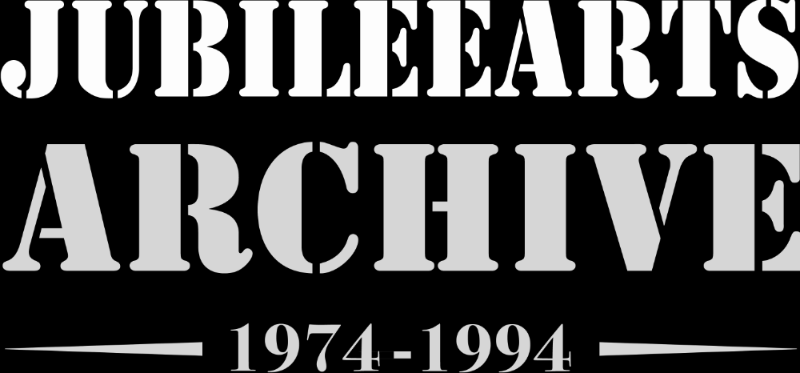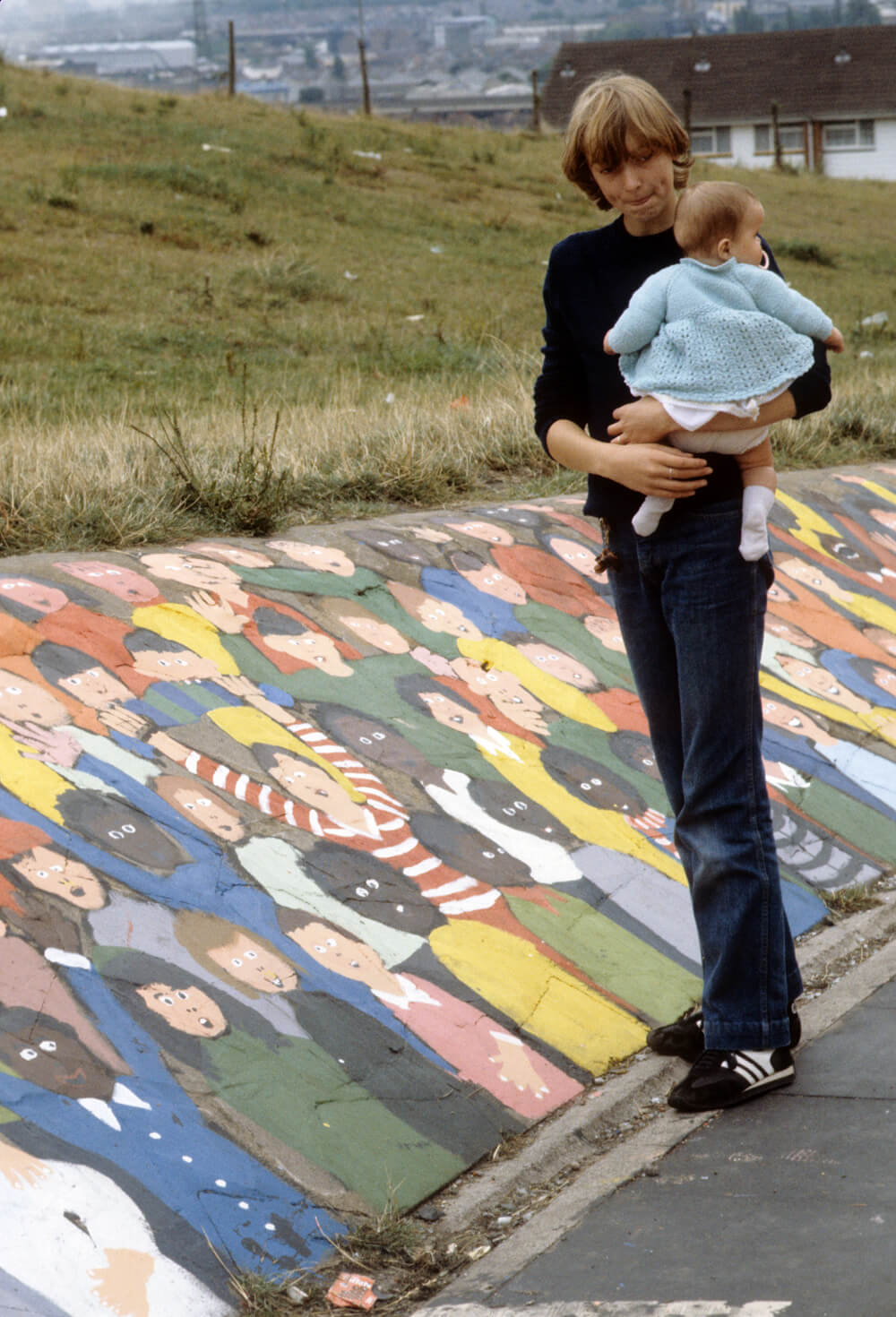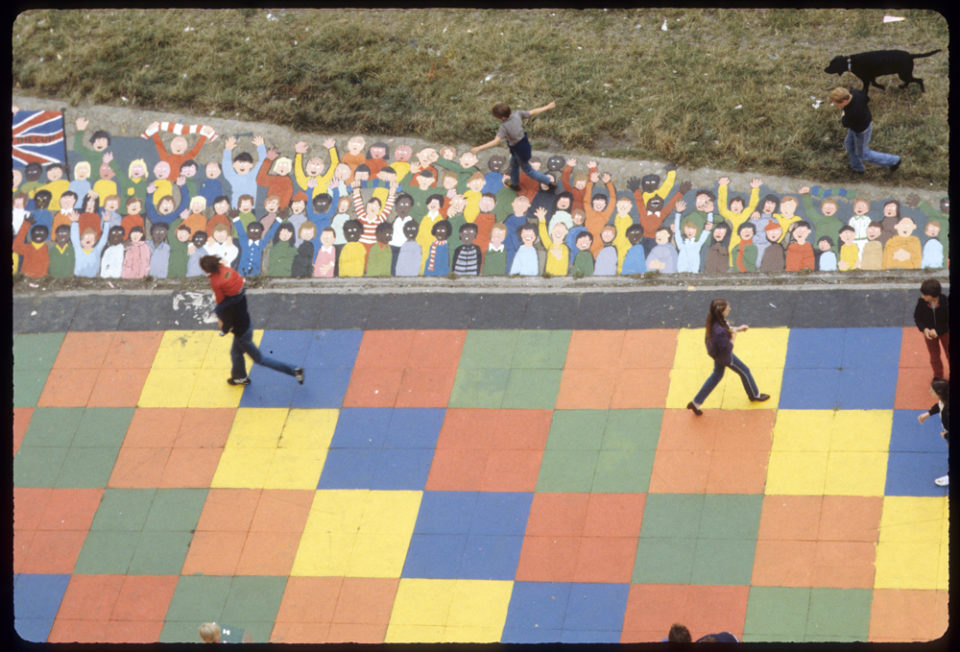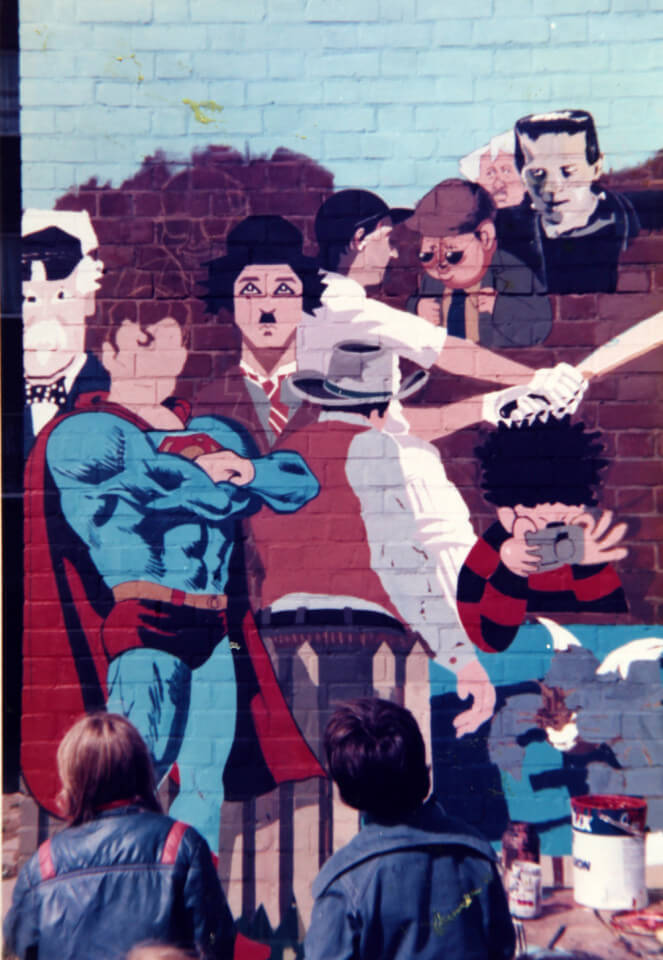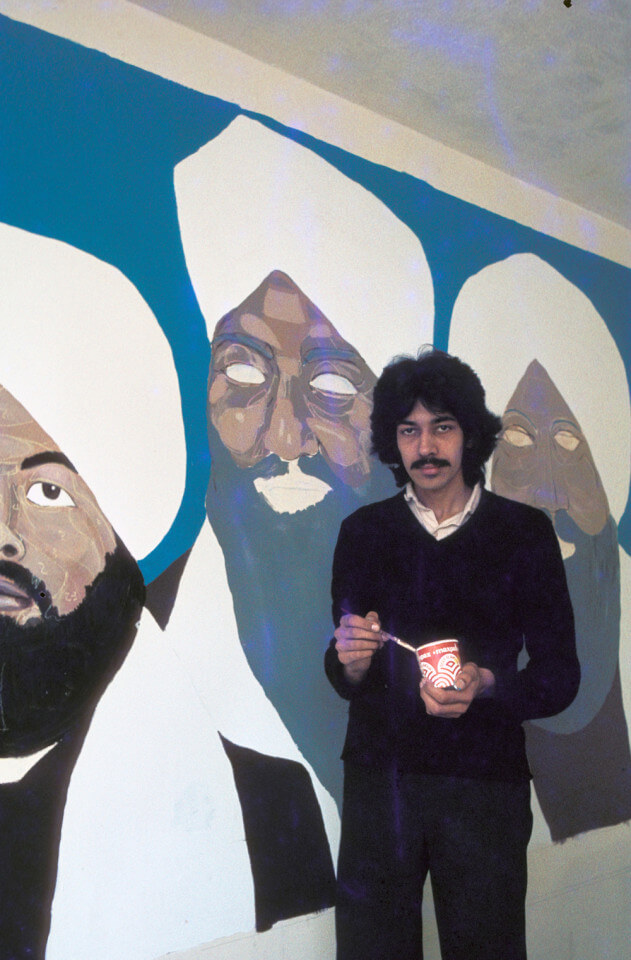It is unlikely that in the Black Country they had heard of the Great Wall of Los Angeles, a community mural begun in 1978 by Judy Baca, made with some 400 young people and artists. Jubilee were certainly aware the London Mural Movement, young artists wanting to work in the public realm, where the street was their canvas. Their aims were similar, of course, wishing to brighten the urban environment and engage with local communities, starting conversations about local needs and aspirations, building relationships and networks.
By 1978, Jubilee had begun to expand their repertoire, advertising for an environmental artist to work with the group. With Martyn Overs at Bermuda Mansions they produced the first murals in Sandwell. During school holidays at Easter and summer, mural making accompanied the play and theatre work programmes and soon took on a life of its own. Mark Renn was another artist who came to work with Jubilee. By 1980, Jubilee had two visual artists as part of their core team, Derek Jones and Peter Chaplin, both of whom worked on murals, banners and print work.
Along Reservoir Road, rising on one side of the Rowley Hills, there were four 14-storey blocks built by Wimpey in the mid-1960s for Rowley Regis Municipal Authority, who then merged into Sandwell in 1974. By then, high-rise flats were to be found all over the region, in ever-increasing heights – according to historian Simon Briefcliffe, there were some 276 block containing 17,428 dwellings.
Here at Reservoir Road, at the foot of one block of flats, a large paved concrete children’s play area was enlivened with a ‘flooral’ – designed and executed by local children working with the Jubilee artists and an awful lot of paint. Using the Playbus as their base of operations, over several days the flagstones were turned into a ready-made gigantic games board. The low areas around the area were painted with a cheering crowd, as you can see in this photograph. While designed as a temporary feature, these works lasted for well over a decade.
It was a notable feature of these early projects that often the young kids brought along their even younger siblings – in many cases they were looking after them while their parents were out at work. ‘Latchkey kids’ was the common term used – which apparently dates back to the Second World War. Even if one parent was at home, the kids would be out and about.
Michelle Blackhall recalls those times in the Black Country: “We lived opposite my Nan, Mom would say go over your Nan’s and we’d run over. We didn’t want to go sometimes so Mom would say ‘We’ll time you… one… two…’ and then that would spur you on and you’d run really fast. And they weren’t timing you at all, cos when you’d come back over the road they’d be going ‘Twenty-five, twenty-six…’ And if you’d got your slippers on you could run really really fast, because they had grip. There wasn’t so much traffic on the roads. You were quite safe. We’d used to go off almost the whole day in the summer holidays. We’d get up at 8 ’o’ clock, we might come back about 2 because we were hungry and then we’d come back about 7 or 8 ’o’ clock at night. It must have been a doddle for our parents. You literally were never around. You didn’t want to come back. We’d be out playing and it would be getting a bit dark and Mom or Dad would come out. ‘Shell! Sean! Come in!’ And we’d go, ‘Nooo… Five more minutes please!’ You were desperate to stay out and all we were doing was making a nuisance of ourselves. In those days, in the 70s, people were really proud of their privets. They used to be cut beautiful and you’d push and shove each other in the privet and they’d go mad and come out their house and shout ‘Clear off down your own end!’”
